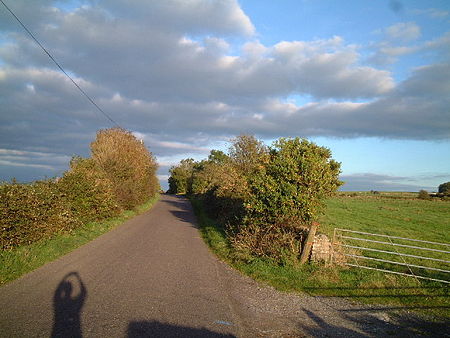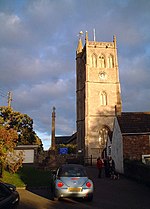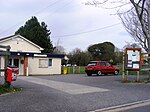Bleadon Hill

Bleadon Hill (grid reference ST351574) is a 13.52 hectare geological Site of Special Scientific Interest just north of the village of Bleadon, North Somerset, notified in 1999. The site is a Geological Conservation Review site, as it shows a low ridge of calcite-cemented Pleistocene sand and gravel on its southern side. Various marine or glacial origins have been postulated for the sediments and it has even been suggested that this is a Mesozoic beach conglomerate. On the basis of the sedimentology, it is most likely that these sediments accumulated during the Quaternary when an ice sheet rested against Bleadon Hill.There is evidence or agricultural use of the land in the medieval period and possibly from Roman times.
Excerpt from the Wikipedia article Bleadon Hill (License: CC BY-SA 3.0, Authors, Images).Bleadon Hill
Roman Road,
Geographical coordinates (GPS) Address Nearby Places Show on map
Geographical coordinates (GPS)
| Latitude | Longitude |
|---|---|
| N 51.3124 ° | E -2.9318 ° |
Address
Roman Road
Roman Road
BS24 0AD
England, United Kingdom
Open on Google Maps









